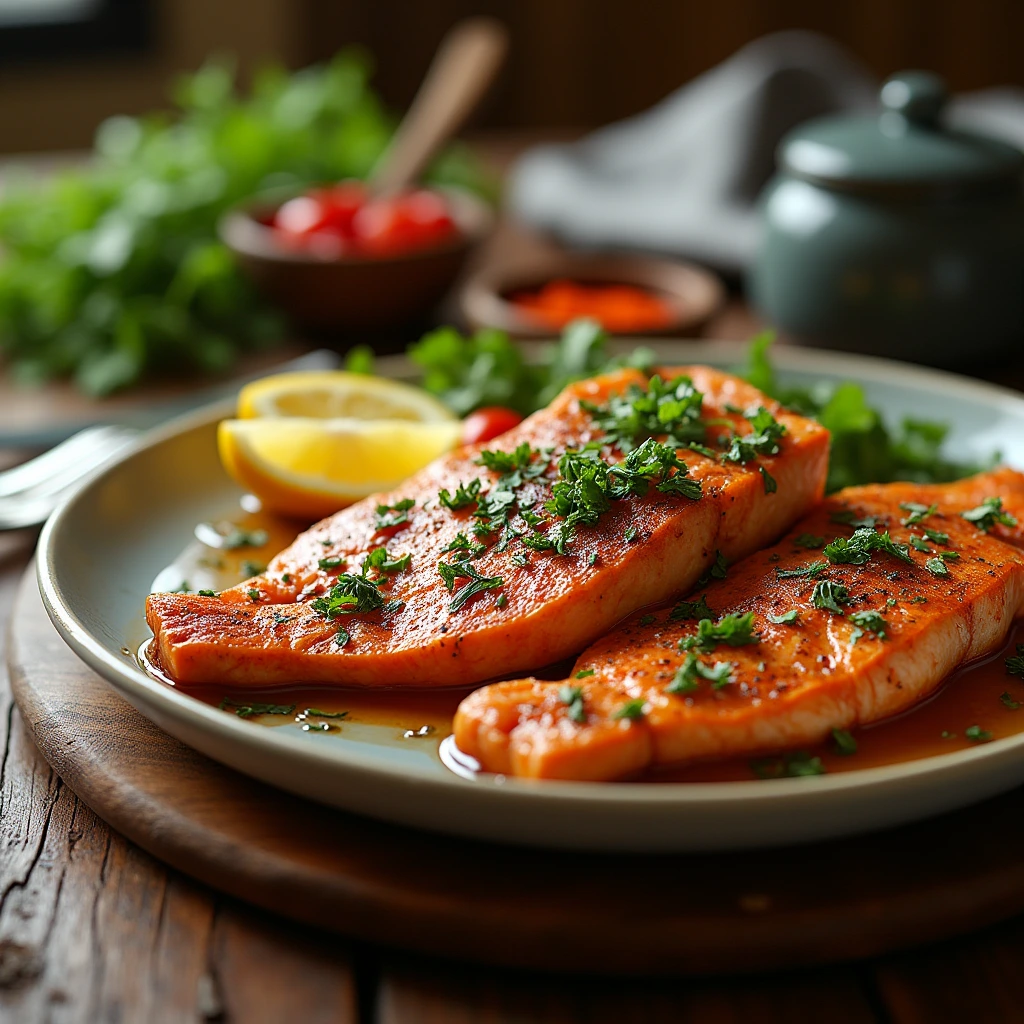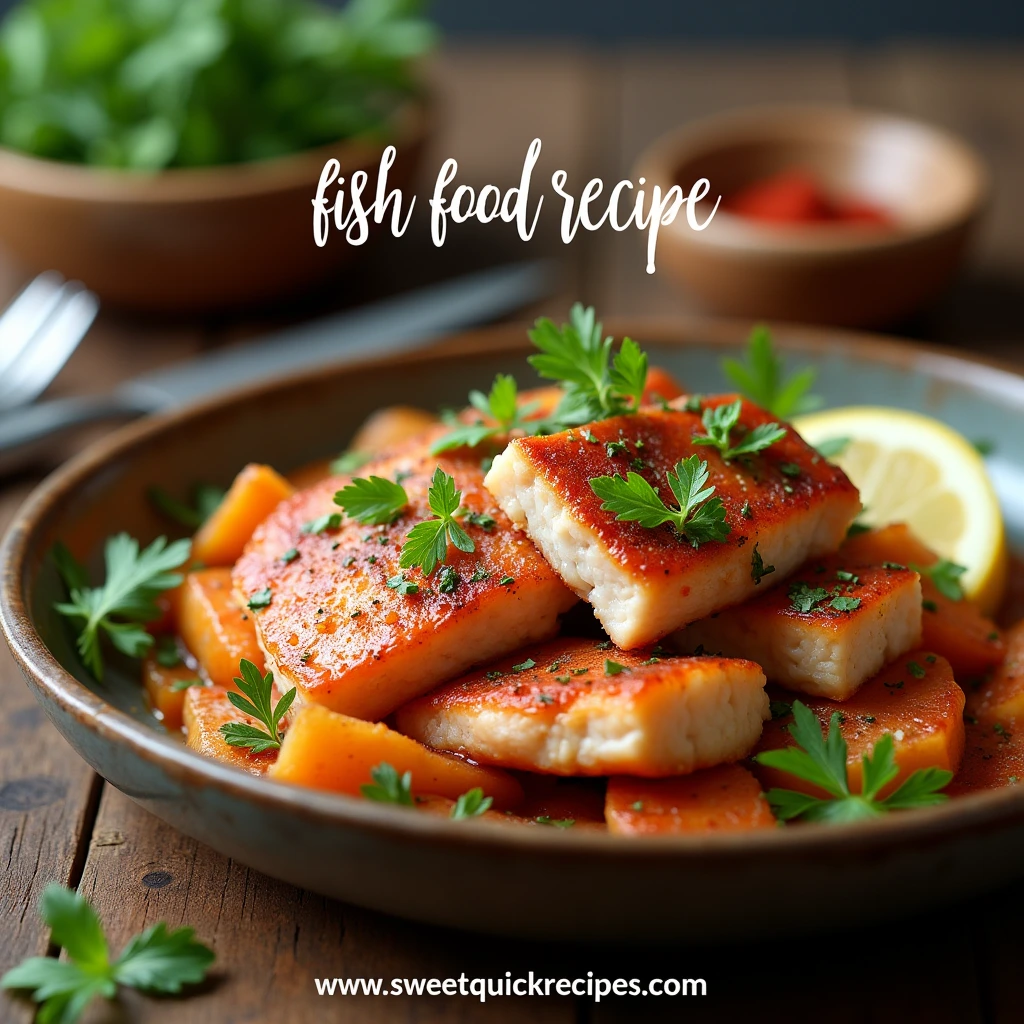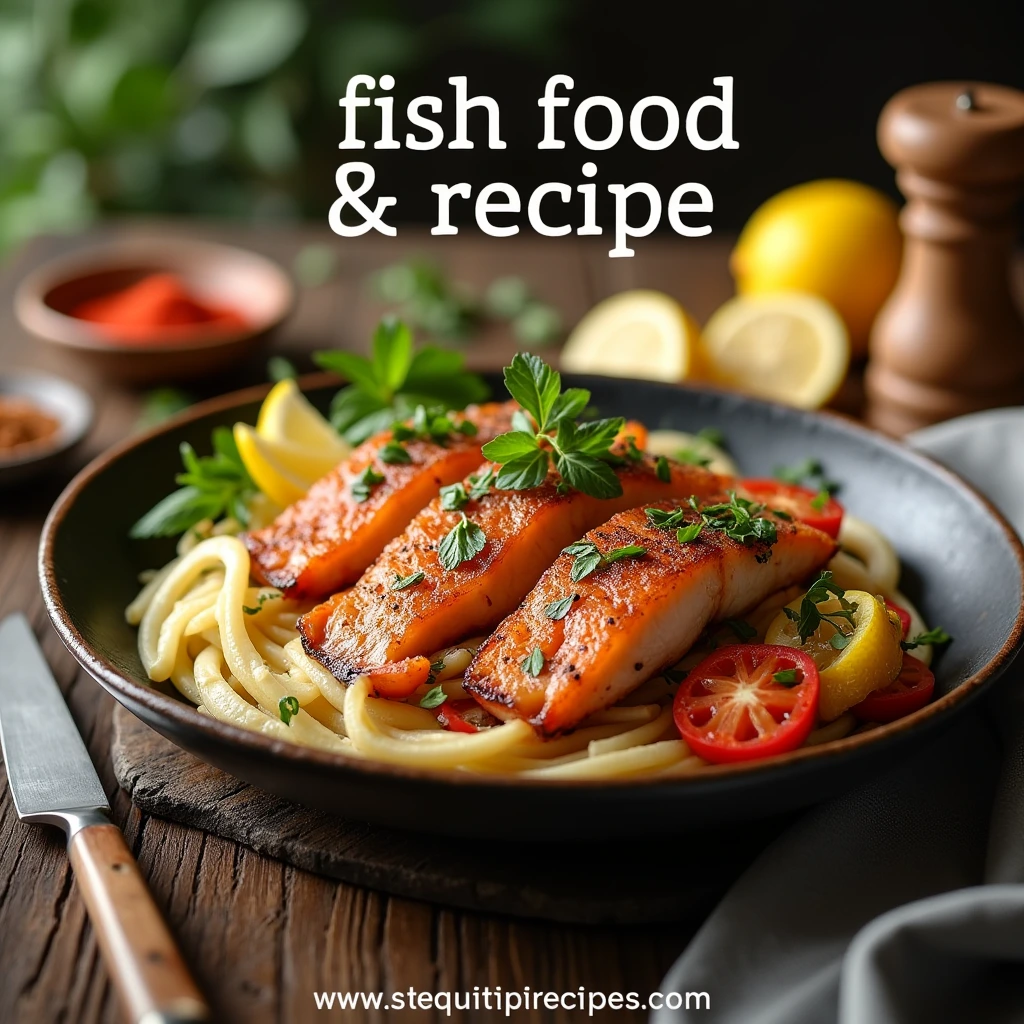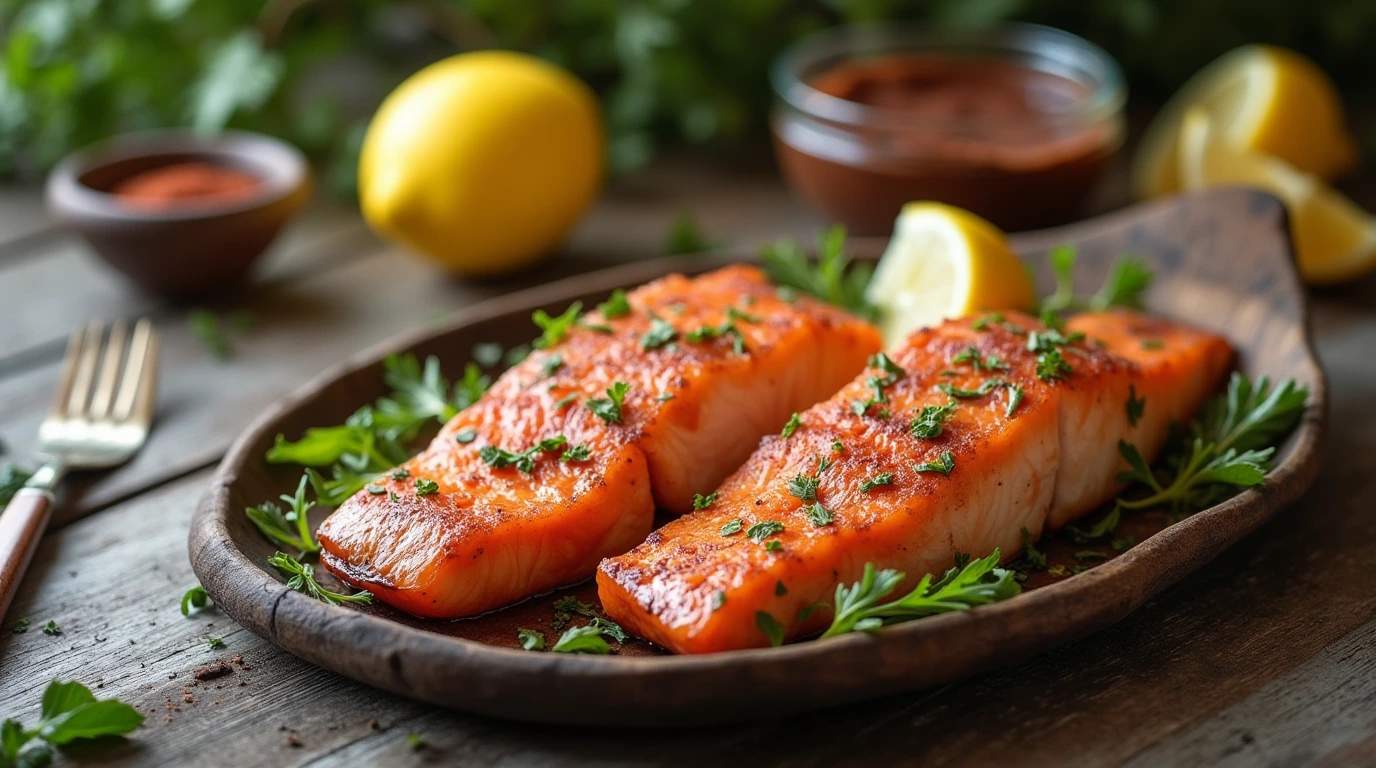| Heading | Subheading |
|---|---|
| Introduction | Why Homemade Fish Food is Beneficial |
| Understanding Fish Nutrition | Essential Nutrients for Fish |
| Protein, Fat, and Carbohydrate Requirements | |
| Role of Vitamins and Minerals | |
| Common Mistakes in Fish Feeding | |
| Ingredients for Fish Food | Choosing the Right Proteins |
| Including Plant-Based Ingredients | |
| Best Sources of Vitamins and Minerals | |
| Fresh vs. Frozen vs. Dry Ingredients | |
| Types of Fish Food Recipes | Recipes for Herbivorous Fish |
| Recipes for Carnivorous Fish | |
| Recipes for Omnivorous Fish | |
| Gel-Based Fish Food | |
| Floating Pellets and Flakes | |
| Homemade Fish Food Recipes | A Simple Protein-Packed Recipe |
| Spirulina and Vegetable Recipe | |
| Gel Fish Food with Gelatin | |
| DIY Fish Treats with Shrimp and Peas | |
| Step-by-Step Recipe Preparation | Preparing Ingredients Properly |
| Mixing and Blending Techniques | |
| Cooking or Setting the Food | |
| Cutting or Shaping for Specific Fish | |
| Preserving Homemade Fish Food | Best Storage Practices |
| Freezing vs. Refrigeration | |
| Avoiding Spoilage | |
| Benefits of DIY Fish Food | Cost-Effectiveness |
| Customizable Nutrition | |
| Ensuring Freshness and Quality | |
| Tips for Feeding Fish Safely | Understanding Feeding Quantities |
| Avoiding Overfeeding | |
| Signs of Malnutrition or Overfeeding | |
| FAQs | Common Questions About Homemade Fish Food |
| Conclusion | Recap of Benefits and Encouragement to Try DIY |
Fish Food Recipe
Focus Keywords: Easy Fish Food Recipe for Aquariums
Slug: fish-food-recipe
Meta Description: Discover an easy fish food recipe to keep your aquarium fish healthy with balanced, customizable nutrition.
Alt text image: A homemade fish food recipe with fresh vegetables and proteins.
The Importance of a Good Fish Food Recipe
A balanced fish food recipe is key to maintaining vibrant, healthy fish in your aquarium. While store-bought food is convenient, crafting homemade fish food allows you to tailor the nutrients to your fish’s specific needs. Whether you have herbivorous, carnivorous, or omnivorous fish, a well-prepared recipe can boost their health and longevity.
Understanding Fish Nutrition
Essential Nutrients for Fish
Fish, like all living creatures, require a blend of nutrients to thrive. Proteins are essential for growth and repair, while fats supply energy. Carbohydrates, though needed in smaller amounts, can provide a quick energy source. Including vitamins and minerals in their diet ensures optimal immune function and vitality.
Protein, Fat, and Carbohydrate Requirements
Carnivorous fish need protein-rich meals, while herbivorous species thrive on plant-based diets. Omnivores enjoy a mix of both. Fat content must be moderate to prevent health issues, and carbohydrates should not exceed dietary recommendations.
Role of Vitamins and Minerals
Vitamins A, D, E, and K play roles in vision, bone health, and overall vitality. Minerals like calcium and phosphorus are vital for skeletal health, while iodine supports thyroid function.
Common Mistakes in Fish Feeding
Overfeeding and poor ingredient quality are frequent errors. Uneaten food can degrade water quality, harming the fish. Using fresh, high-quality ingredients minimizes these risks.
Ingredients for Fish Food
Choosing the Right Proteins
Protein sources like fish, shrimp, and earthworms are excellent choices. For herbivores, soybeans or peas are great alternatives. Ensure all proteins are free of additives or contaminants.
Including Plant-Based Ingredients
Vegetables such as spinach, zucchini, and spirulina provide essential nutrients. Herbivorous fish particularly benefit from these plant sources.
Best Sources of Vitamins and Minerals
Natural options include seaweed for iodine and carrots for beta-carotene. A balanced variety ensures all dietary requirements are met.
Fresh vs. Frozen vs. Dry Ingredients
Fresh ingredients retain more nutrients but require proper preservation. Frozen options are convenient and nutrient-rich, while dry ingredients, like spirulina powder, are excellent for boosting certain recipes.

Homemade Fish Food Recipes
A Simple Protein-Packed Recipe
- Ingredients: Fish fillets, shrimp, and gelatin.
- Instructions: Blend ingredients into a fine paste. Add gelatin for binding, shape into cubes, and refrigerate.
Spirulina and Vegetable Recipe
- Ingredients: Spirulina powder, spinach, zucchini, and peas.
- Instructions: Steam the vegetables, blend with spirulina, and form into flakes or pellets.
Gel Fish Food with Gelatin
- Ingredients: Fish meal, carrots, gelatin, and vitamins.
- Instructions: Mix boiled vegetables with fish meal, stir in gelatin, and let it set in molds.
DIY Fish Treats with Shrimp and Peas
- Ingredients: Cooked shrimp, peas, and a touch of garlic.
- Instructions: Blend, form into bite-sized pieces, and freeze.
Step-by-Step Recipe Preparation
Preparing Ingredients Properly
Wash all ingredients thoroughly to remove contaminants. Steam or boil vegetables to make them easily digestible.
Mixing and Blending Techniques
Use a high-powered blender to achieve a smooth consistency. This ensures uniformity and prevents clumps that can cloud the aquarium.
Cooking or Setting the Food
Depending on the recipe, cook or let the mixture set with gelatin. Avoid overcooking to preserve nutrients.
Cutting or Shaping for Specific Fish
Shape food into flakes, pellets, or cubes, considering the size and species of your fish.

Preserving Homemade Fish Food
Best Storage Practices
Store in airtight containers to prevent spoilage. For long-term use, consider freezing the food.
Freezing vs. Refrigeration
Freezing preserves freshness and extends shelf life. Refrigeration works for short-term storage but may limit freshness.
Avoiding Spoilage
Regularly check for signs of spoilage, such as discoloration or a sour smell. Discard any food showing these signs.
FAQs
How do I know if my fish are getting enough nutrients?
Observe their activity levels, coloration, and growth. Healthy fish will be vibrant and energetic.
Can I use kitchen scraps for fish food?
Yes, but ensure they are safe, free of oils, and suitable for fish species.
How long can homemade fish food last?
Frozen fish food can last up to six months, while refrigerated food is best used within a week.
What ingredients should I avoid?
Avoid spices, high-fat meats, and processed foods, as these can harm your fish.
Can I make floating pellets at home?
Yes, by incorporating binders like agar-agar, you can create pellets that float.
Do different fish species require separate diets?
Yes, tailor recipes to match the dietary preferences of herbivorous, carnivorous, or omnivorous fish.
Conclusion
Crafting your own fish food recipe empowers you to take charge of your aquarium’s ecosystem. Not only does it ensure healthier fish, but it also saves money and allows for customization. By experimenting with ingredients and methods, you can create a perfect, nutritious blend that your fish will love. Dive into the world of DIY fish food today and watch your aquatic pets thrive!
Benefits of DIY Fish Food
Cost-Effectiveness
Store-bought fish food, particularly premium brands, can strain your budget over time. Homemade alternatives, on the other hand, use readily available and affordable ingredients. A single batch of DIY fish food can last for weeks, significantly reducing expenses.
Customizable Nutrition
Every fish species has unique dietary requirements. Carnivorous fish thrive on high-protein diets, while herbivorous species require plant-based meals. By crafting your fish food, you can cater to these specific needs, ensuring balanced nutrition tailored to your aquatic pets.
Ensuring Freshness and Quality
Commercial fish food often contains preservatives and fillers that may not benefit your fish. Homemade recipes rely on fresh ingredients, free from harmful additives. This ensures a diet rich in nutrients and promotes the overall health of your fish.
Tips for Feeding Fish Safely
Understanding Feeding Quantities
Overfeeding is a common mistake that affects water quality and fish health. Feed your fish small amounts that they can consume within a few minutes. Monitor their eating habits and adjust portions accordingly.
Avoiding Overfeeding
Uneaten food decomposes in the tank, leading to increased ammonia levels and poor water quality. Stick to scheduled feeding times and provide only as much food as your fish require.
Signs of Malnutrition or Overfeeding
Observe your fish for signs of health issues. Malnourished fish may exhibit sluggishness, pale coloration, or fin damage. Conversely, overfed fish may become bloated or lethargic, signaling the need for adjustments in feeding practices.
Innovative Fish Food Ideas
Incorporating Seasonal Ingredients
Depending on availability, seasonal fruits and vegetables can be a great addition to your recipes. Ingredients like cucumbers and squash are easy to digest and provide essential nutrients.
Using Aquarium-Safe Supplements
Enhance your fish food with safe supplements such as omega-3 oils or calcium powder. These add-ons can promote strong bones and a healthy immune system.
Creating Treats for Special Occasions
Fish, like other pets, can enjoy occasional treats. Blend ingredients like shrimp or bloodworms into the mix to give your fish a flavorful surprise during feeding times.
Environmental Impact of Homemade Fish Food
Reducing Packaging Waste
Store-bought fish food often comes in plastic packaging, contributing to environmental waste. By making your own food, you can minimize reliance on disposable materials and adopt eco-friendly storage solutions.
Using Locally Sourced Ingredients
Sourcing ingredients locally reduces your carbon footprint and ensures fresher, higher-quality products. Support local farmers or fisheries to obtain sustainable ingredients for your fish food recipes.
Composting Food Scraps
Homemade fish food production often generates vegetable peels or other scraps. Composting these materials promotes sustainability and provides nutrient-rich compost for your garden.
Common Myths About Fish Food Recipes
Myth: Homemade Fish Food is Too Complex
Contrary to popular belief, creating fish food at home is simple and requires minimal equipment. With a blender and a few ingredients, you can craft nutritious meals in no time.
Myth: Store-Bought Food is Always Better
While commercial fish food is convenient, it often contains fillers or low-quality ingredients. Homemade food offers greater control over the nutritional value, ensuring your fish receive premium quality.
Myth: All Fish Can Eat the Same Food
Different fish species have varying dietary needs. While omnivores can adapt to a broad diet, herbivores and carnivores require specialized recipes to meet their nutritional demands.
Exploring Advanced Techniques
Fermentation for Probiotics
Fermented ingredients, like yogurt or specially cultured foods, can introduce probiotics into your fish’s diet. These beneficial bacteria support digestion and boost immune health.
Dehydration for Long-Lasting Food
Using a food dehydrator, you can create dry fish flakes or pellets that store well for months. This technique ensures your fish food remains fresh and ready for use at any time.
Using Specialized Molds
Invest in fish food molds to create attractive and functional shapes. Molds can help produce uniform pellets or fun shapes that make feeding time engaging.
DIY Fish Food for Specific Needs
For Fry and Juvenile Fish
Young fish require a finely blended diet to support rapid growth. Include nutrient-dense ingredients like egg yolks and finely ground fish meal for their development.
For Breeding Fish
Breeding fish need enhanced nutrition to support reproduction. Adding high-protein options like live brine shrimp or daphnia boosts their energy and health during the breeding cycle.
For Bottom-Dwelling Fish
Species like catfish and loaches thrive on sinking foods. Create gel-based or dense pellets to ensure the food reaches the bottom of the tank.
Fun Ways to Involve the Family
Crafting fish food can be a fun family project. Involve children by letting them shape the food or measure ingredients. It’s an educational opportunity to teach sustainability and the importance of animal care while creating something beneficial for your pets.
Adapting Recipes for Exotic Fish Species
Catering to Wild-Caught Species
Wild-caught fish often have more specific dietary needs due to their natural habits. Mimicking their native diet with ingredients like insect larvae or algae ensures their nutritional needs are met, promoting a smooth transition to captivity.
Feeding Marine Fish
Marine species often require diets rich in omega-3 fatty acids and proteins. Incorporating seaweed, krill, and fish meal into recipes caters to their preferences and nutritional demands.
Caring for Picky Eaters
Some fish may initially reject homemade food. Gradual introduction alongside store-bought options can help acclimate them. Enhancing flavors with garlic or other natural attractants can make DIY food more enticing.
Common Challenges in Making Fish Food
Balancing Nutritional Needs
Achieving the right balance of proteins, fats, and carbohydrates is crucial. Overemphasis on one group can lead to health problems. Consult reliable resources or aquarists to refine your recipes.
Maintaining Food Consistency
Homemade food can sometimes disintegrate in water, clouding the tank. Adding binders like agar-agar or gelatin helps maintain the food’s integrity.
Ensuring Palatability
Different fish have unique taste preferences. Experimenting with small batches of recipes helps determine what works best for your tank inhabitants.
Long-Term Benefits of DIY Fish Food
Enhancing Fish Longevity
A consistent, high-quality diet directly impacts the lifespan of your fish. Nutrient-rich homemade food supports strong immune systems and minimizes the risk of disease.
Improved Water Quality
Homemade food reduces the number of fillers and unnecessary by-products entering the tank. This minimizes water pollution, making it easier to maintain a healthy aquarium environment.
Stronger Bond with Your Pets
Taking the time to prepare fish food fosters a deeper connection with your aquatic pets. Observing their positive response to your efforts is both rewarding and educational.
Innovative Techniques for Modern Aquarists
3D-Printed Fish Food Molds
Technology-savvy aquarists can explore 3D-printed molds to create custom shapes and sizes of fish food. These can be designed to cater to specific species or add a decorative element to feeding time.
Using Freeze-Dried Ingredients
Freeze-dried options like bloodworms or krill can be rehydrated and added to recipes, ensuring convenience without sacrificing nutritional value.
Incorporating Bioavailable Nutrients
Bioavailability ensures fish absorb nutrients efficiently. Focus on ingredients that are easily digested, such as spirulina and fish oil, to maximize dietary benefits.
The Role of Homemade Fish Food in Breeding Success
Encouraging Spawning Behavior
Protein-rich diets with live or fresh ingredients like daphnia, brine shrimp, and tubifex worms can encourage breeding. This is particularly effective for egg-laying and live-bearing species.
Supporting Fry Development
Young fish require easily digestible food in small particle sizes. Include finely ground ingredients, like powdered spirulina or egg yolks, to promote rapid growth and robust health.
Improving Egg Quality
A nutrient-dense diet for breeding pairs improves the viability and health of their eggs. This ensures a higher survival rate among fry.
Comparing Homemade and Commercial Fish Food
| Aspect | Homemade Fish Food | Commercial Fish Food |
|---|---|---|
| Nutritional Control | Fully customizable to species’ needs | Pre-formulated, less adaptable |
| Cost | Affordable, especially for large quantities | Can be expensive, especially premium brands |
| Shelf Life | Shorter, requires proper storage | Longer shelf life with preservatives |
| Environmental Impact | Eco-friendly, less packaging waste | Often contributes to plastic pollution |
| Ease of Use | Requires preparation time | Ready to use out of the package |
This table highlights the advantages of homemade fish food in various aspects while acknowledging the convenience of commercial options.

Incorporating Seasonal Variations
Spring and Summer Ingredients
Seasonal vegetables like zucchini and spinach are abundant and nutrient-rich. Fresh ingredients provide optimal health benefits when incorporated during warmer months.
Winter Alternatives
Frozen and dried ingredients become valuable during winter. Stocking up on these ensures consistent feeding, even when fresh produce is less available.
Adapting to Breeding Seasons
During breeding periods, supplement the diet with high-energy foods like live shrimp and worm-based recipes to support reproductive health.
DIY Fish Food for Different Aquarium Setups
Community Tanks
For diverse tanks, a universal recipe catering to both herbivores and carnivores is ideal. Including blended vegetables and protein sources ensures all species are well-fed.
Planted Aquariums
Fish in planted tanks often graze on algae. Enhance their diet with spirulina-based recipes to support this natural behavior.
Cichlid-Specific Recipes
Cichlids benefit from a diet rich in proteins and carotenoids. Ingredients like shrimp, krill, and carrots can enhance their coloration and vitality.
Recipes for Special Health Conditions
Boosting Immune Health
Include garlic, a natural immune booster, in recipes to ward off infections. Spirulina and vitamin-enriched foods further support fish resilience.
Supporting Recovery from Illness
Sick or recovering fish need easily digestible, protein-rich foods. Gelatin-based recipes with added vitamins and probiotics are ideal during recovery.
Preventing Obesity
For fish prone to obesity, reduce fat content and focus on high-fiber ingredients like peas and zucchini. Avoid overfeeding to maintain a healthy weight.
Frequently Asked Questions
How do I prevent homemade fish food from clouding the water?
Adding binders like gelatin or agar-agar helps maintain the food’s structure, preventing it from disintegrating and clouding the tank.
Can I feed my fish fresh fruits?
Some fish enjoy small amounts of fruits like melon or cucumber. Ensure the fruits are pesticide-free and offered sparingly to avoid water contamination.
Is it safe to use live food in recipes?
Yes, but ensure live food is sourced from reputable suppliers to avoid introducing diseases into your tank.
How often should I feed homemade food?
Feeding once or twice daily in small portions is sufficient. Monitor your fish’s behavior to determine if they need more or less.
Can homemade fish food replace commercial food entirely?
Yes, as long as the recipes are nutritionally complete and suited to the species’ needs. Rotating between multiple recipes ensures variety.
What’s the best way to introduce homemade food?
Start by mixing homemade food with their usual diet. Gradually increase the proportion of DIY food to help them adapt.
Conclusion
Homemade fish food is a game-changer for aquarium enthusiasts. It offers unparalleled customization, cost savings, and the assurance of fresh, high-quality nutrition for your aquatic pets. By dedicating time to understand your fish’s dietary needs and crafting recipes accordingly, you can create a thriving underwater ecosystem. Whether you’re a beginner or a seasoned aquarist, diving into DIY fish food preparation is a rewarding journey that benefits both you and your fish. Start experimenting today, and watch your aquarium flourish like never before!
Follow us for recipes on Facebook

